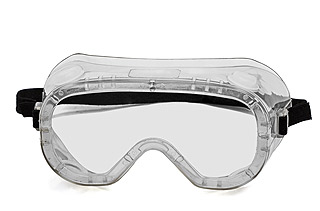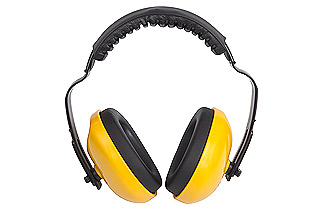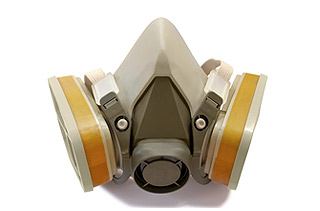Back to DIY Advice
DIY Floor Sanding Safety: Tips to Protect Yourself and Your Home
 There’s something special about rolling up your sleeves and tackling a project with your own two hands. Few things beat the satisfaction of standing back and thinking, “I did that.” It’s a spark of pride that no shop-bought service can replace.
There’s something special about rolling up your sleeves and tackling a project with your own two hands. Few things beat the satisfaction of standing back and thinking, “I did that.” It’s a spark of pride that no shop-bought service can replace.
But let’s be honest — floor sanding isn’t usually at the top of the DIY popularity charts. Some people dive in thinking it’s easy, only to quit halfway. Others get bored with the endless passes of the machine. And then there are those who simply lack the willpower to finish. Even seasoned professionals don’t often shout, “I love floor sanding!” after a long day of work.
Still, whether you find it rewarding or exhausting, floor sanding and restoration comes with its own set of hidden dangers. Like any craft, it looks simple from the outside, but ignoring safety can quickly turn a proud DIY moment into a painful regret. That’s why understanding the risks — and how to avoid them — is essential before you even switch on the machine.
Essential Safety Gear for Floor Sanding

When it comes to safety, floor sanding is a head-to-toe operation. You’re not just protecting yourself from accidents with the machines — you’re also shielding against exposure to VOCs (Volatile Organic Compounds) and other chemicals found in adhesives and modern finishing products. Even so-called water-based finishes, often marketed as “eco-friendly,” can still contain substances you don’t want in your lungs or on your skin.
Personal Protective Equipment (PPE) must-haves:
Ear Plugs or Defenders – Floor sanding machines are loud enough to make your neighbour’s lawnmower sound like a lullaby. Long exposure without ear protection can cause permanent hearing damage. A good set of defenders not only protects your ears but also makes the job more bearable.
Dust Mask – Aggressive sanding, stripping old finishes, or dealing with stubborn stains can release a cocktail of fine dust and chemical particles. Without a mask, they’ll head straight for your lungs. A proper dust mask keeps your airways safe and your health intact.

Safety Goggles – Tiny shards of wood or metal can become airborne during edge sanding. Once they hit your eyes, there’s no Ctrl+Z. Goggles are a simple but essential way to avoid permanent damage.
Protective Suit & Gloves – These may not win you any fashion contests, but they’ll protect your skin from solvents and chemicals, while gloves prevent bruises and irritation. Some high-solvent finishes can cause rashes — and that’s the mild end of the spectrum.
Knee Pads – Ask any retired floor fitter, and they’ll tell you: knees don’t forgive. Hours of kneeling without protection will catch up with you. A good pair of foam pads will not only save your joints but also make the job more comfortable.
Preparation: The Secret Ingredient to a Safe Sanding Job
Before you even think about switching on a sander, your floor needs a full safety check. Skipping this stage is like trying to cook with the oven still full of last week’s takeaway — messy, dangerous, and guaranteed to end badly.
Nails, Screws & Staples – Look carefully for anything sticking out of the boards. Even a small protrusion can damage your hired machine or worse, injure you. Nails should be punched down so they sit at least 3 mm below the surface. Clout nails are best removed completely, as they can eventually split the wood.
Cables & Wires – You’d be surprised how many cables lurk around floor level — telephone lines, alarm systems, TV and internet wires, the list goes on. Tape them securely with duct tape and remove anything fragile from the room, like mirrors or hanging pictures. Floor sanding and flying debris do not mix well with glass.
Finishes & Chemicals – This is a big one. Many floor finishes are highly flammable and contain chemicals that can trigger asthma, allergies, or even affect the nervous system. Sadly, there have been documented cases of DIY sanders in the US who lost their lives due to flash fires caused by careless use of flammable finishes. Don’t take chances — always ask questions about the safety of any product you use. Better still, consider natural finishes. While they may not last as long as chemical-heavy products, they are far safer for your health and your home.
General Safety Tips for DIY Floor Sanding
Floor sanding machines are powerful tools — treat them carelessly, and they’ll remind you why. Always think before you act, and if you’re unsure how to handle something, don’t wing it. Ask for advice from a professional or the hire company. A few smart precautions can save you from injury, costly damage, and a very awkward phone call when returning the rental machine.
- Always gear up: Wear goggles, dust masks, and ear defenders to protect your eyes, lungs, and hearing.
- Clear the space: Empty the room before sanding to avoid accidents and protect your equipment.
- Watch the cables: Keep cords taped down or out of the way to prevent tripping or accidental damage.
- Respect moving parts: Never place hands or objects near the active sanding drum or discs.
- Use enough abrasives: Don’t try to stretch one sheet too far — change them when they lose effectiveness.
- Empty dust bags regularly: A full bag reduces efficiency and increases fire risk.
- Dispose of dust safely: Store collected sanding dust in a sealed, fireproof container outdoors — not in the kitchen bin.
- Handle hired equipment responsibly: You’re liable for damages, so use machines carefully and return them in good condition.
- Adjust machines with care: Only tweak settings after consulting an expert. Guesswork and heavy machinery don’t mix.
Final Thoughts on DIY Floor Sanding Safety
DIY floor sanding can be rewarding, but only if you respect the process. With the right preparation, protective gear, and a cautious mindset, you can achieve great results without unnecessary risks. Remember, safety isn’t about slowing you down — it’s about making sure you actually get to enjoy the beautiful wooden floor you’ve worked so hard to restore.
FAQ: DIY Floor Sanding Safety
- Is floor sanding dangerous? Yes, if done carelessly. Risks include dust inhalation, hearing damage, chemical exposure, and even fire hazards. Proper preparation and equipment reduce these risks significantly.
- Can I use any dust mask? Not all masks are suitable. Always choose a mask rated for fine dust (P2 or P3 filters are best) to protect your lungs effectively.
- How should I dispose of sanding dust? Never keep it indoors or in a plastic bin. Place the dust in a fireproof metal container and store it outside.
- What if I don’t feel confident with the machines? If you’re unsure, don’t risk it. Call in professionals from FlooringFirst! who have the tools and expertise to do the job safely.